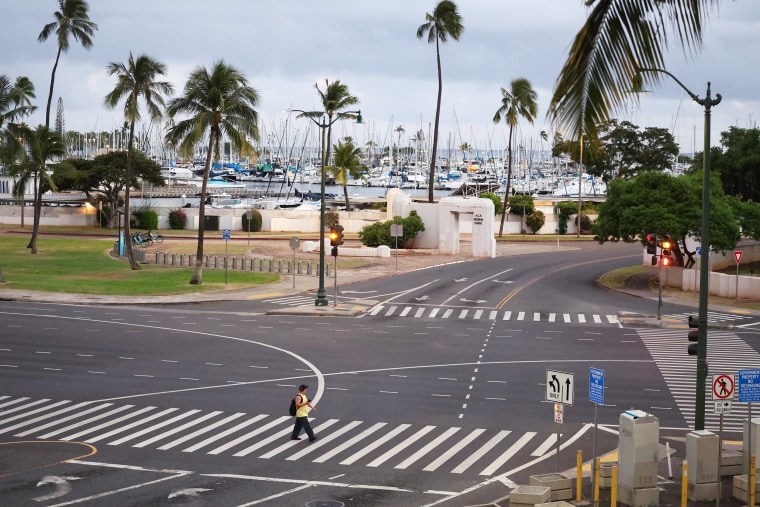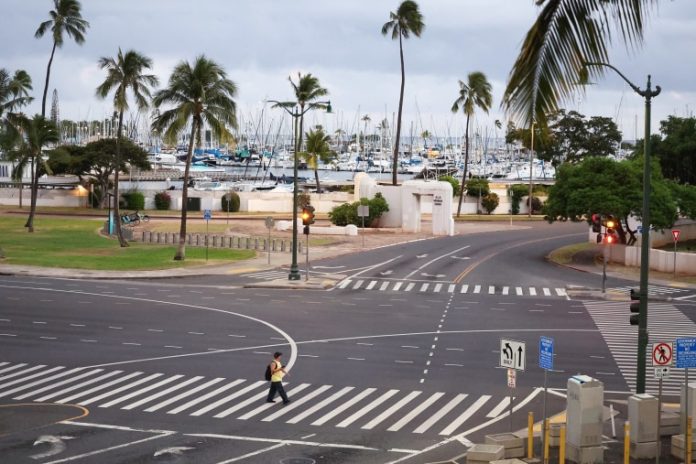
Tsunami waves reached the shorelines of Hawaii, California, and Washington on Wednesday morning following a massive 8.8-magnitude earthquake off Russia’s far eastern Kamchatka Peninsula. Although alerts triggered evacuations and emergency responses across the Pacific, the impact across the United States remained minimal.
Authorities in Hawaii issued immediate evacuation orders late Tuesday night, closing Hilo International Airport to facilitate the movement of residents from low-lying coastal areas. Sirens sounded every hour to warn residents as state and local officials warned of potential waves as high as six feet.
By early Wednesday morning, the Pacific Tsunami Warning Center downgraded the alert to a tsunami advisory, allowing evacuated residents to return home. Governor Josh Green confirmed there was “significant water” recorded but no reported damage on Oahu. He called the absence of destruction “a blessing,” though urged continued caution until all-clear was officially declared.
Footage from Honolulu showed residents gathered at the shoreline, cheering as smaller-than-expected waves arrived. Still, officials stressed that follow-up waves can often be larger and more dangerous, and urged people not to return to the beaches prematurely.
On the U.S. mainland, tsunami waves of under four feet reached coastal regions of California and Washington. Monterey and San Francisco recorded minor wave activity shortly after midnight, prompting advisories to avoid harbors and west-facing beaches. A tsunami warning remained active for a 40-mile stretch of Northern California coastline near the Oregon border.
Dr. Ariel Cohen of the National Weather Service’s Los Angeles office emphasized ongoing risks due to strong water surges, even with reduced wave height. “We are seeing a lot of surging of the waters,” he said.
In Russia, the epicenter of the earthquake, tsunami waves over 13 feet were reported, and damage was recorded in parts of Kamchatka. Emergency crews evacuated approximately 3,000 people in affected areas.
Nearly two million people were also evacuated in Japan, where tsunami advisories remain in place from Hokkaido to Okinawa. Although initial warnings have been lifted in many parts of the country, residents were urged to stay away from coastal zones and river mouths due to the risk of residual waves.
Elsewhere in the Pacific, tsunami alerts were issued in Guam, Samoa, the Philippines, New Zealand, and French Polynesia, among others. Coastal authorities in Central and South America, including Chile, Mexico, and Colombia, also issued warnings or advisories in anticipation of wave activity.
The quake, originally reported as magnitude 8.0, was upgraded to 8.8 by the U.S. Geological Survey. Aftershocks measuring 6.3 and 6.9 were recorded in the Kamchatka region. The quake struck at a depth of 12 miles, approximately 85 miles offshore.
Despite the enormous scale of the earthquake and the vast tsunami alert network activated globally, no deaths have been reported as of Wednesday morning. Emergency officials across affected regions continue to monitor wave activity and advise caution until the full impact has passed.



